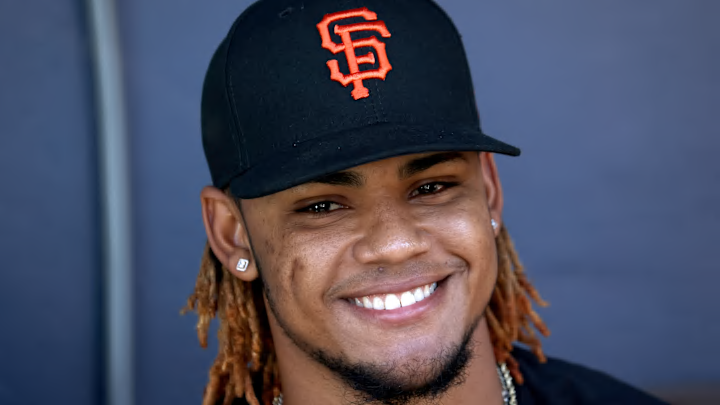Depth Chart Weakness (Hint: It's The Infield)
Third Base – Third base faces the same issues that the shortstop corps has: volatility and uncertainty. However, what put the third base as a weakness is the lack of high-end talent. Yes, Casey Schmitt is exceptional and is a sure-fire third baseman. Yes, Sean Roby might have contact issues, but he should stick at third base.
However, the decision to leave David Villar open for other teams to potentially acquire the Richmond third baseman via the Rule 5 Draft will hurt the depth of the position that only has three 40 FV and better third baseman prospects.
The prospects outside the 40 FV tier have issues of volatility and uncertainty that are akin to their shortstop counterparts. Outside of Yorlis Rodriguez and Will Toffey, who are more decent than spectacular, the young third baseman prospects in the organization have shown that they are still in the early stages of their development based on their 2021 seasons.
Elian Rayo, Irvin Murr, and Anthony Rodriguez all had shaky campaigns. Specifically, it’s tough to envision Rayo sticking at third base given his present body, and Rodriguez does not have a high ceiling as a prospect. Only Derwin Laya is the most likely prospect to break through and reach 40 FV after the 2022 season, but that possibility is slim after an up-and-down 2021 season.
The right side of the infield – Combining both first base and second base position groups is convenient because both positions face the same issue: a general lack of talent. Both the first and second baseman groups do not have a prospect with at least 45 FV to lead their group, unlike the other groups above. There is also not only very little depth in the position outside the 40 FV but also a lack of promising talent that could break through while primarily playing on the right side of the infield.
Looking at first base, Toribio is the leader of the pack, but he put on a disappointing performance last season in San Jose where he was left in the dust by the fellow Latino prospects that were still on par with him before the season started. Frankie Tostado or Garrett Frechette could pass him at the mid-season mark, especially Frechette if he could break out this season like what is expected of him to do.
Even though he played first base last season, Javier Francisco is not a first baseman at all. The coaching staff in the Dominican only put him at first base last season because they viewed him as too good to not be in any lineup but he’s blocked by the prospects who garnered a bigger signing bonus than him which is pretty unfair if you ask me. Francisco is a shortstop or a third baseman. That only leaves Wyatt and Layer who struggled mightily last season, though Layer was a key player for San Jose’s success last season and Wyatt’s a walks machine and just about it. There is a lack of talent and depth in the position that is coined as the “cold corner”, funny enough.
There is a brighter light at the end of the tunnel for the second baseman group, but it’s still not as bright as the other demographic aside from first base. The group has a nice trio of prospects who all could play in the big leagues one day. Whiteman’s speed alone might be valuable for San Francisco as a pinch-runner while Fitzgerald and Glowenke could hit and defend their way through the Minors.
Outside of the trio, though, lies the issue of depth and uncertainty. Jason Krizan could very well reach the Majors this season but his overall value is very limited as he’s already in his early 30s, Carter Aldrete is a worse Fitzgerald last season, Shane Matheny has a slim chance to make the big leagues because of his major hitting woes, and we still do not have the number of Damon Dues.
The light at the end of the tunnel comes from the prospects in the shortstop group moving over to second base like Edison Mora, Diego Velasquez, and Will Wilson that should boost the depth of the position but it will still not have the top talent that the position needs to at least not be a position of need.
